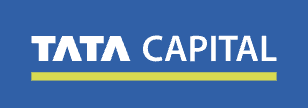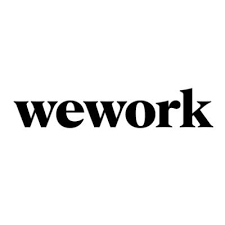What Is an IPO? How an Initial Public Offering Works


For many newcomers to investing, the term IPO often pops up in financial news. An IPO, or Initial Public Offering, marks one of the most significant milestones in a company’s journey. For investors, understanding what an IPO is and how it works is an essential step before deciding whether to invest at the early stage.
To help you get a better grasp, Gotrade breaks down the definition of an IPO, the process behind going public, and what it means for both companies and investors.
What Is an IPO?
An Initial Public Offering (IPO) is the process where a private company sells its shares to the public for the first time on a stock exchange. In Indonesia, IPOs are conducted through the Indonesia Stock Exchange (IDX), while in the United States they typically happen on major exchanges like the Nasdaq or the New York Stock Exchange (NYSE).
The main goal of an IPO is to raise capital—funds that can be used for business expansion, paying down debt, or strengthening working capital. Once a company goes public, its shares are freely traded by the public, and the company officially becomes a listed entity.
This is why IPOs are often called “going public” or “the first public offering.”
Why Do Companies Go Public?
There are several reasons a company may decide to list on the stock market:
- Access to Larger Capital
Going public allows companies to raise far more money than through bank loans or venture capital alone. - Boosting Credibility
Public companies are required to publish regular financial reports, which increases transparency and builds trust with customers, partners, and investors. - Liquidity for Early Shareholders
Founders, employees, or early investors can sell part of their holdings on the secondary market once the IPO is complete. - Global Expansion
Listing internationally opens the door to a wider investor base and stronger global presence.
An IPO is more than just a fundraising event—it’s a transformation into a regulated public entity with stricter governance standards.
How Does an IPO Work?
An IPO doesn’t happen overnight. Here are the main stages a company must go through:
- Internal Decision
Management and the board agree the company is ready to go public, weighing financial readiness, growth prospects, and reporting capabilities. - Hiring an Underwriter
An investment bank (underwriter) is appointed to advise on share pricing, allocation, and the marketing strategy for the IPO. - Due Diligence & Prospectus
A prospectus is prepared, outlining the company’s business model, financials, risks, and plans for the funds raised. In Indonesia, this must be submitted to the Financial Services Authority (OJK). - Pricing
Share prices are set through “bookbuilding,” a process of gauging investor demand to determine fair value. - Public Offering Period
Shares are made available to both retail and institutional investors within a specific timeframe. - Listing on the Exchange
Once the IPO is finalized, the company’s stock begins trading openly on the exchange. From here, the price will fluctuate depending on market demand.
Popular IPO Examples
Some IPOs have gone down in history as landmark events:
- Alibaba (2014) – Raised $25 billion on the NYSE, one of the largest IPOs ever.
- Facebook (2012) – Collected $16 billion despite early trading hurdles, now a global tech powerhouse.
- GoTo (2022) – Indonesia’s mega-IPO, attracting millions of local retail investors.
These examples show that IPOs can be exciting opportunities, but also come with risks since share prices can swing dramatically.
Risks and Rewards for Investors
Potential Upsides:
- Early access to high-growth companies.
- Share prices may surge shortly after listing if demand is strong.
Risks:
- Stocks can drop sharply after debut.
- Newly public companies may struggle with regulatory compliance and transparency.
- Limited track record makes long-term valuation harder to assess.
History shows many IPOs on Wall Street experience unstable performance within the first year, so patience and careful analysis are crucial.
Conclusion
Now you have a clearer picture of what an IPO is. For companies, it’s a chance to raise significant capital. For investors, it’s an opportunity to participate early in a company’s growth story.
But like all investments, IPOs carry risks. New investors should always read the prospectus carefully, evaluate the company’s fundamentals, and avoid getting swept up by hype.
Interested in investing in global companies from the start of their journey? With Gotrade, you can buy shares of world-class giants like Apple, Tesla, and Google—all from your phone.
Be part of the growth story of global companies in a simple, secure, and transparent way. Available now on iOS and Android.
FAQ
1. Can every company go public?
→ No. Companies must meet financial, governance, and regulatory requirements before being approved for an IPO.
2. Do IPO stocks always make money?
→ Not necessarily. Some IPOs skyrocket, while others fall. Performance depends on market conditions and the company’s long-term business results.
Disclaimer:
Gotrade is the trading name of Gotrade Securities Inc., which is registered with and supervised by the Labuan Financial Services Authority (LFSA). This content is for educational purposes only and does not constitute financial advice. Always do your own research (DYOR) before investing.
- Five new companies are launching their IPOs this business week, starting October 27.
- This will bring the total number of public issues in October to 15.
- An IPO is when a private company sells its shares to the public for the first time to raise capital.
- The report suggests that investors can look forward to new opportunities this week.
- There will be a boom in the market this week
- Get your money ready! These 5 companies are bringing IPOs this week, here is the complete list
- The primary market is once again going to see a huge buzz. Investors can get ready for many new investment opportunities this week. Starting from October 27, 5 new companies are bringing their Initial Public Offerings (IPOs) this business week.
- Including these five new IPOs, there will be a total of 15 public issues in the month of October. Looking at the data, this month has been great so far.
Apply for IPO at No Cost!
Easily invest in upcoming companies through UPI and seize the opportunity before they list.Apply for IPO
Ongoing IPOs in India
Discover the list of Ongoing IPOs in India along with Ongoing IPO List, Price, Dates and other details.
ORKLA INDIA LIMITED
Bids sent from 10 AM to 5 PM are processed the same day. Otherwise, they are processed the next workday at 10 AM.
ORKLAINDIAORKLA INDIA LIMITED
BSE IPO
Bidding dates29 Oct 2025 – 31 Oct 2025
Price range₹695 – ₹730
Min. investment₹14,600
Issue size1587.59 – 1667.54 Cr
Lot size20 Shares
IPO DocRHP
IPO Timeline
Allotment date
03 Nov 2025
Refund initiation
04 Nov 2025
Share credit
06 Nov 2025
Deactivate mandate
07 Nov 2025
About company
Incorporated in 1996, Orkla India Limited is an Indian food company, offering a diverse range of food products, from breakfast to lunch and dinner, snacks, beverages, and desserts.
It has a collection of iconic Indian heritage brands – MTR Foods, Eastern Condiments, and Rasoi Magic
MTR Foods – Instant mixes, ready-to-eat meals, masalas, breakfast mixes, snacks & beverages such as Spices, RTC foods, RTE foods, vermicelli, etc.
Eastern Condiments – Spices and convenience foods
The company serves customers across the country with signifcant presence in core markets; Karnataka, Kerala, Andhra Pradesh and Telangana. Further, it also exports products to about 42 countries such as GCC countries, US, and Canada
As of June 30, 2025, it has over 400 products across categories. In fiscal 2025, the company has sold 2.3 million units on average every day.
It manufactures goods across manufacturing facilities in India as well as contract manufacturing facilities in India and in the UAE, Thailand and Malaysia. As of March 31, 2025, the company owns 9 manufacturing facilities in India, with a total installed capacity of 182,270 TPA.
The company has a strong network distribution with 834 distributors and 1,888 sub-distributors across 28 states and 6 union territories.
Strengths and Risks
Strengths
Heritage brands like MTR and Eastern command strong consumer loyalty and trust, especially in South India.
The company offers over 400 products across multiple meal occasions—spices, mixes, ready-to-eat, and convenience foods—helping to hedge against demand slowdowns in any one segment.
Support from Orkla ASA, a major Norwegian conglomerate, translates to international expertise, robust corporate governance, and financial stability—underpinning investor confidence and best practices.
Risks
A large portion of sales comes from Karnataka and Kerala, posing concentration risk despite efforts to expand northward and utilize e-commerce for broader growth.
Heavy reliance on agri-inputs and spices makes profitability vulnerable to commodity price swings, though scale efficiencies help mitigate some impact
Although diaspora markets are strong, global brand awareness outside these segments remains limited, constraining overseas growth.
What is the meaning of Ongoing IPOs?
Ongoing IPOs refer to Initial Public Offerings currently open for subscription in the stock market. During this period, investors can apply for shares of a company aiming to raise capital by offering its shares to the public. Ongoing IPOs are time-sensitive, typically lasting 3–10 days. For example, if a company announces its IPO from December 5 to December 9, it is considered ongoing during those dates. Investors can submit bids within the specified price range and lot size. After the IPO closes, shares are allocated based on demand and availability, followed by listing on the stock exchange.
How do IPOs Work?
IPOs begin with the company filing a draft prospectus with SEBI, outlining financials and objectives. Once approved, the company announces the IPO dates and price band. Investors place bids during the subscription period. After closure, shares are allocated, and the company lists on the stock exchange, allowing public trading of its shares.
| Company Name | IPO Date | Price Range | Lot size | RHP |
|---|---|---|---|---|
| 30 Oct-03 Nov | ₹557.00-₹585.00 | – | ||
| 31 Oct-04 Nov | ₹382.00-₹402.00 | – | ||
| 04 Nov-07 Nov | ₹120.00-₹125.00 | – | ||
| To be announced | – | – | RHP | |
| To be announced | – | – | RHP | |
| To be announced | – | – | RHP | |
| To be announced | – |
| Company Name | Listing date | Issue price | Listing price | Listing gain |
|---|---|---|---|---|
 MIDWESTLTDMidwest Ltd MIDWESTLTDMidwest Ltd | 24 Oct | ₹1014.00-₹1065.00 | 1165.10 | 100.10(9.40%) |
 CANHLIFECanara HSBC Life Insurance Company Ltd CANHLIFECanara HSBC Life Insurance Company Ltd | 17 Oct | ₹100.00-₹106.00 | 106.00 | 0.00(0.00%) |
 CRAMCCanara Robeco Asset Management Company Ltd CRAMCCanara Robeco Asset Management Company Ltd | 16 Oct | ₹253.00-₹266.00 | 280.25 | 14.25(5.36%) |
 RUBICONRubicon Research Ltd RUBICONRubicon Research Ltd | 16 Oct | ₹461.00-₹485.00 | 620.10 | 135.10(27.86%) |
 ANANTAMAnantam Highways Trust ANANTAMAnantam Highways Trust | 17 Oct | ₹98.00-₹100.00 | 103.02 | 3.02(3.02%) |
 LGEINDIALG Electronics India Ltd LGEINDIALG Electronics India Ltd | 14 Oct | ₹1080.00-₹1140.00 | 1715.00 | 575.00(50.44%) |
 TATACAPTata Capital Ltd TATACAPTata Capital Ltd | 13 Oct | ₹310.00-₹326.00 | 330.00 | 4.00(1.23%) |
 WEWORKWework India Management Ltd WEWORKWework India Management Ltd | 10 Oct | ₹615.00-₹648.00 | 0.00 | -648.00(-100.00%) |
 ADVANCEAdvance Agrolife Ltd ADVANCEAdvance Agrolife Ltd | 08 Oct | ₹95.00-₹100.00 | 113.00 | 13.00(13.00%) |
| 07 Oct | ₹181.00-₹191.00 | 191.00 | 0.00(0.00%) | |
 GLOTTISGlottis Ltd GLOTTISGlottis Ltd | 07 Oct | ₹120.00-₹129.00 | 88.00 | -41.00(-31.78%) |
 OMFREIGHTOm Freight Forwarders Ltd OMFREIGHTOm Freight Forwarders Ltd | 08 Oct | ₹128.00-₹135.00 | 82.50 | -52.50(-38.89%) |
 PACEDIGITKPace Digitek Ltd PACEDIGITKPace Digitek Ltd | 06 Oct | ₹208.00-₹219.00 | 226.85 | 7.85(3.58%) |
 JKIPLJinkushal Industries Ltd JKIPLJinkushal Industries Ltd | 03 Oct | ₹115.00-₹121.00 | 125.00 | 4.00(3.31%) |
 TRUALTTruAlt Bioenergy Ltd TRUALTTruAlt Bioenergy Ltd | 03 Oct | ₹472.00-₹496.00 | 550.00 | 54.00(10.89%) |
 BMWVENTLTDBMW Ventures Ltd BMWVENTLTDBMW Ventures Ltd | 01 Oct | ₹94.00-₹99.00 | 80.00 | -19.00(-19.19%) |
 EPACKPEBEPack Prefab Technologies Ltd EPACKPEBEPack Prefab Technologies Ltd | 01 Oct | ₹194.00-₹204.00 | 186.10 | -17.90(-8.77%) |
 JAINRECJain Resource Recycling Ltd JAINRECJain Resource Recycling Ltd | 01 Oct | ₹220.00-₹232.00 | 265.25 | 33.25(14.33%) |
What are Recently Listed IPOs?
Recently Listed IPOs refer to Initial Public Offerings that have completed their subscription and allotment process and are now available for trading on stock exchanges. These stocks have transitioned from private to public ownership, and their market price is determined by demand and supply in the secondary market. Investors track recently listed IPOs to assess their market performance post-listing. Companies use IPOs to raise capital, and the stock’s listing marks its official entry into public trading. Some IPOs debut with significant price gains, while others might underperform, depending on market conditions and investor sentiment.
What happens when an IPO is Listed?
When an IPO is listed, its shares become publicly tradable on the exchange. The opening price is determined through book-building or fixed pricing methods and may differ from the IPO price. Trading begins, allowing investors to buy or sell shares.
Search any Stocks, Blogs, Circulars, News, Articles
Search any Stocks, Blogs, Circulars, News, Articles
We’ll take an in-depth look at the IPO process, how it works, and why it matters to both companies and investors. Whether you’re curious about the IPO listing process, exploring new IPO listings, or planning your next IPO investment, this guide has you covered.
For a comprehensive overview of market dynamics and investor behavior during this period, refer to our September 2025 stock market wrap
The IPO Process: How IPO Works
Understanding how IPO works is crucial for anyone involved in the stock market. In an IPO, various stakeholders including underwriters and investors play intricate roles, and understanding these roles is crucial for anyone looking to invest. The IPO process includes:

1. Planning Stage:
The IPO process begins with meticulous planning. During this stage, the company evaluates its readiness to go public by assessing its financial health, growth prospects, and overall market conditions. Key activities include:
- Assessing Financial Health: Companies ensure their financial statements are audited and compliant with regulations. Strong financials can attract more investors.
- Market Research: Understanding market sentiment and timing the IPO launch to align with favorable economic conditions.
- Internal Preparations: Companies may restructure operations, reduce debts, or address governance issues to present a compelling case to investors.
The goal of this stage is to determine whether the company is ready to meet the rigorous demands of public ownership and regulatory scrutiny.
2. Hiring Investment Banks:
Investment banks, also known as underwriters, are brought on board to guide the company through the various stages of an IPO process. Their responsibilities include:
- Valuation: Helping determine the company’s market value, which influences the IPO share price.
- Drafting the Prospectus: Assisting with the preparation of documents, including the draft red herring prospectus (DRHP).
- Marketing the IPO: Running roadshows and other promotional activities to generate interest among institutional and retail investors.
- Risk Management: Underwriters often guarantee the sale of shares by purchasing any unsold portion, ensuring the IPO is a success.
Investment banks act as the bridge between the company and potential investors, playing a vital role in the IPO’s success.
3. Regulatory Filings:
This stage involves submitting detailed documentation to the relevant regulatory authority in India, this is the Securities and Exchange Board of India (SEBI). Key steps include:
- Draft Red Herring Prospectus (DRHP): This document provides detailed information about the company, including financials, business strategy, risks, and how the funds will be used.
- Approval Process: SEBI reviews the DRHP to ensure transparency and compliance with regulatory norms. Once approved, the company can proceed with the IPO.
- Investor Confidence: Regulatory oversight assures investors that the company meets the highest standards of accountability and governance.
This stage establishes trust and credibility, essential for attracting investor interest.
4. Roadshows:
Roadshows are an integral part of the IPO process, where the company’s leadership team presents its case to institutional investors. Key elements include:
- Presentations: Management outlines the company’s vision, financial performance, and growth strategy.
- Engaging with Investors: One-on-one meetings and Q&A sessions help address investor queries and build confidence.
- Feedback Collection: Insights from potential investors help fine-tune pricing and demand estimates.
Roadshows create momentum for the IPO by generating interest and enthusiasm among key players in the market.
5. IPO Launch:
Once the regulatory approvals are in place and interest has been generated, the IPO is officially launched. During this phase:
- Book Building: Investors place bids within a specified price range, and the final IPO share price is determined based on demand.
- Subscription Period: Retail, institutional, and high-net-worth investors subscribe to the shares. High demand can lead to oversubscription, which is a positive indicator.
- Transparency: Real-time updates on subscription levels are made available to the public, ensuring a fair and transparent process.
The IPO launch is the culmination of months of preparation, offering investors the first opportunity to participate.
6. IPO Listing:
The final step is the IPO listing, where the company’s shares are traded publicly for the first time. Key aspects include:
- Stock Exchange: The company’s shares are listed on platforms like NSE and BSE in India.
- Listing Price: The opening price is determined by demand and supply during pre-market sessions.
- Trading Begins: Investors can now buy and sell the company’s shares in the open market.
- Impact on Valuation: A strong debut often boosts the company’s valuation, while a weak one may indicate skepticism from the market.
The listing day marks the company’s official entry into the share market, providing liquidity to initial investors and setting the tone for its market journey.
You may also want to know What Is the Lock-In Period in IPOs?
Types of IPOs
There are several types of IPOs, each with its unique characteristics and advantages. Understanding these types can help investors and companies make informed decisions. Here are the most common types of IPOs:
- Fixed Price IPO: In a fixed price IPO, the company sets a fixed price for the shares being offered. Investors can purchase the shares at this predetermined price. This type of IPO provides clarity on the investment amount required.
- Book Building IPO: In a book building IPO, the company sets a price range for the shares being offered. Investors can bid on the shares within this range, and the final price is determined based on demand. This method helps in discovering the market-driven price.
- Dutch Auction IPO: In a Dutch auction IPO, the company sets a minimum price for the shares being offered. Investors can bid on the shares at or above this minimum price. The final price is determined by the highest price at which all shares can be sold.
- Direct Listing IPO: In a direct listing IPO, the company lists its shares on a stock exchange without issuing new shares or raising capital. This method allows existing shareholders to sell their shares directly to the public, providing liquidity without dilution.
Benefits of an IPO
An IPO can provide several benefits to a company, making it an attractive option for many businesses. Here are some of the key advantages:
- Access to Capital: An IPO can provide a company with access to a large amount of capital. The company can use this capital to fund growth initiatives, pay off debt, or invest in new projects, driving expansion and innovation.
- Increased Visibility: Going public can increase a company’s visibility and credibility. This heightened profile can help attract new customers, partners, and investors, enhancing the company’s market position.
- Liquidity: An IPO can provide liquidity to a company’s shareholders. Once the company lists the shares for public trading, shareholders can sell them on the open market, providing an exit strategy and an opportunity to realize their investments.
- Improved Governance: An IPO can lead to improved governance. Public companies are subject to stricter regulatory requirements and must disclose more information to the public. This increased transparency can enhance corporate governance and accountability.
IPO in India: A Growing Market
India has firmly established itself as a thriving destination for Initial Public Offerings (IPOs), driven by a combination of robust economic growth, a burgeoning middle class, and increased participation from both retail and institutional investors. The Indian IPO market has witnessed significant evolution over the past few decades, transitioning from sporadic public listings to a well-structured and vibrant marketplace that attracts global attention.
You may also want to know OFS vs IPO
The Drivers Behind India’s Growing IPO Market
Economic Growth and Industrial Expansion:
India’s rapid economic growth has created opportunities for businesses across sectors to expand. Companies from traditional industries like manufacturing and banking to new-age startups in technology, fintech, and renewable energy are leveraging IPOs to fuel their growth and innovation.
Favorable Government Policies:
Policies such as “Startup India” and “Make in India” have encouraged entrepreneurship and increased investor confidence. Regulatory bodies like the Securities and Exchange Board of India (SEBI) have streamlined the IPO process, making it more transparent and accessible for companies and investors alike.
Increased Retail Participation:
Over the years, retail investors have shown a growing interest in IPOs, thanks to increased financial literacy and the ease of accessing markets via digital platforms. Apps and brokers now offer seamless onboarding, allowing even first-time investors to participate in new IPO listings. For those looking to diversify their investments beyond IPOs, real estate investment trusts (REITs) offer a way to earn steady rental-like income while balancing portfolio risk.
Growth of Domestic and Foreign Investment:
Both domestic institutional investors (DIIs) and foreign institutional investors (FIIs) actively participate in Indian IPOs. The attractive growth prospects of Indian companies make them appealing to a global audience, further boosting IPO subscription levels.
IPO Investment: Is It Worth It?
Investing in Initial Public Offerings (IPOs) can be an exciting prospect for both seasoned and novice investors. In an IPO, both institutional and retail investors can participate, each bringing different advantages and challenges to the table. It offers an opportunity to be part of a company’s growth journey right from the start of its public market life. However, like any investment, IPOs come with their own set of risks and challenges. Before diving into an IPO, it’s essential to weigh the potential rewards against the risks by considering key factors like valuation, growth potential, and market sentiment.
1. Valuation: Is the Company’s IPO Share Price Justified?
One of the most critical aspects of IPO investment is evaluating whether the company’s IPO share price aligns with its intrinsic value. The valuation is determined during the book-building process, where the price is set based on demand from institutional and retail investors. However, this doesn’t always mean the price is fair or justified.
Premium Valuation Risks: Some companies price their IPOs at a premium, banking on market hype or investor optimism. This can result in overvaluation, leaving little room for price appreciation post-listing.
Financial Health: Assess the company’s financial performance, including revenue growth, profitability, and debt levels. Comparing these metrics to industry benchmarks helps determine whether the valuation is reasonable.
Comparable Companies: Evaluate the IPO share price relative to competitors or industry peers. A significantly higher price could indicate overvaluation, while a lower price might signal potential value or underlying risks.
Investors must adopt a cautious approach and avoid getting swept up in market enthusiasm without understanding the true worth of the company.
2. Growth Potential: Does the Company Have a Clear Roadmap for Future Growth?
The long-term success of an Pre IPO investment largely depends on the company’s ability to sustain and grow its business post-listing. Growth potential should be assessed based on:
Business Model and Industry Position: A company with a strong business model and a unique competitive advantage is better positioned for future growth. Look for companies operating in sectors with high growth potential, such as technology, renewable energy, or healthcare.
Management Team: A capable and experienced management team is crucial for executing growth strategies effectively. Assess the track record of the leadership and their ability to navigate market challenges.
Use of IPO Proceeds: Examine how the company plans to use the funds raised through the IPO. Growth-focused investments, such as expanding operations, entering new markets, or investing in research and development, are positive indicators.
Industry Trends: Evaluate whether the company’s industry is poised for growth. Sectors benefiting from technological advancements or government incentives often present better opportunities.
A clear roadmap for growth backed by strong fundamentals can significantly enhance the chances of a successful IPO investment.
3. Market Sentiment: Are Investors Optimistic About the Sector?
Market sentiment plays a significant role in the performance of IPOs, particularly on listing day. Positive sentiment can drive high demand, leading to oversubscription and strong listing gains, while negative sentiment can dampen enthusiasm and result in muted performance.
Economic and Market Conditions: Favorable economic conditions and bullish market trends create a conducive environment for IPOs. Conversely, bearish trends or economic uncertainty may lead to subdued interest.
Sector Sentiment: The performance of recent IPOs in the same sector can provide insights into investor appetite. For example, if multiple tech IPOs have performed well, it indicates strong interest in the sector.
Institutional Participation: High demand from institutional investors is often a positive signal, as these players conduct extensive due diligence before investing. Retail investors can use this as an indicator of confidence.
While market sentiment can drive short-term price movements, it’s essential to focus on the company’s fundamentals for long-term investment success.
How IPO Share Price Is Decided
Determining the IPO share price is one of the most critical steps in the Initial Public Offering (IPO) process. It not only sets the tone for the company’s market debut but also influences investor interest and confidence. The pricing is carefully calculated through a market-driven process called book-building, which ensures transparency and fairness.
The Book-Building Process: A Key Mechanism
The book-building process is a method of price discovery where investors bid for shares within a specified price range. This process balances the company’s need to raise funds with investors’ expectations of fair value. Here’s how it works:
Setting the Price Band:
- The company, in consultation with its underwriters, determines a price range called the price band.
- This range is based on factors like the company’s financial performance, market conditions, and peer valuations.
- For example, a company might set a price band of ₹100 to ₹120 per share.
Investor Bidding:
- During the subscription period, investors (institutional, high-net-worth individuals, and retail) place bids specifying the number of shares they want to buy and the price they are willing to pay within the price band.
- Institutional investors often bid for large quantities, providing early signals of demand.
Demand Aggregation:
- Once bidding closes, the system compiles bids into a demand schedule, showing the number of shares bid at various price points within the band.
- This process helps underwriters determine the cut-off price, where they can allocate the majority of shares.
Final Price Determination:
- The cut-off price is set where demand meets the supply of shares offered.
- If there’s high demand, the final price might be at the upper end of the range; if demand is weaker, it may be closer to the lower end.
IPO Risks and Considerations
While an IPO can offer numerous benefits, it also comes with several risks and considerations that companies must carefully evaluate. Here are some of the most significant risks and considerations:
- Cost: An IPO can be a costly process. Fees associated with underwriting, legal, accounting, and regulatory compliance can range from 5-15% of the total amount raised, making it a significant financial commitment.
- Time-Consuming: Preparing for an IPO can be a time-consuming process. It often requires several months of meticulous planning, documentation, and compliance efforts, diverting management’s attention from day-to-day operations.
- Regulatory Requirements: An IPO requires a company to comply with strict regulatory requirements. This includes the disclosure of detailed financial information and the implementation of robust corporate governance policies, which can be demanding and complex.
- Market Volatility: An IPO can be affected by market volatility. The company’s stock price may fluctuate significantly in the days and weeks following the IPO, influenced by market conditions, investor sentiment, and external factors.
By understanding these risks and considerations, companies can better prepare for the challenges of going public and make informed decisions about whether an IPO is the right path for their growth strategy.